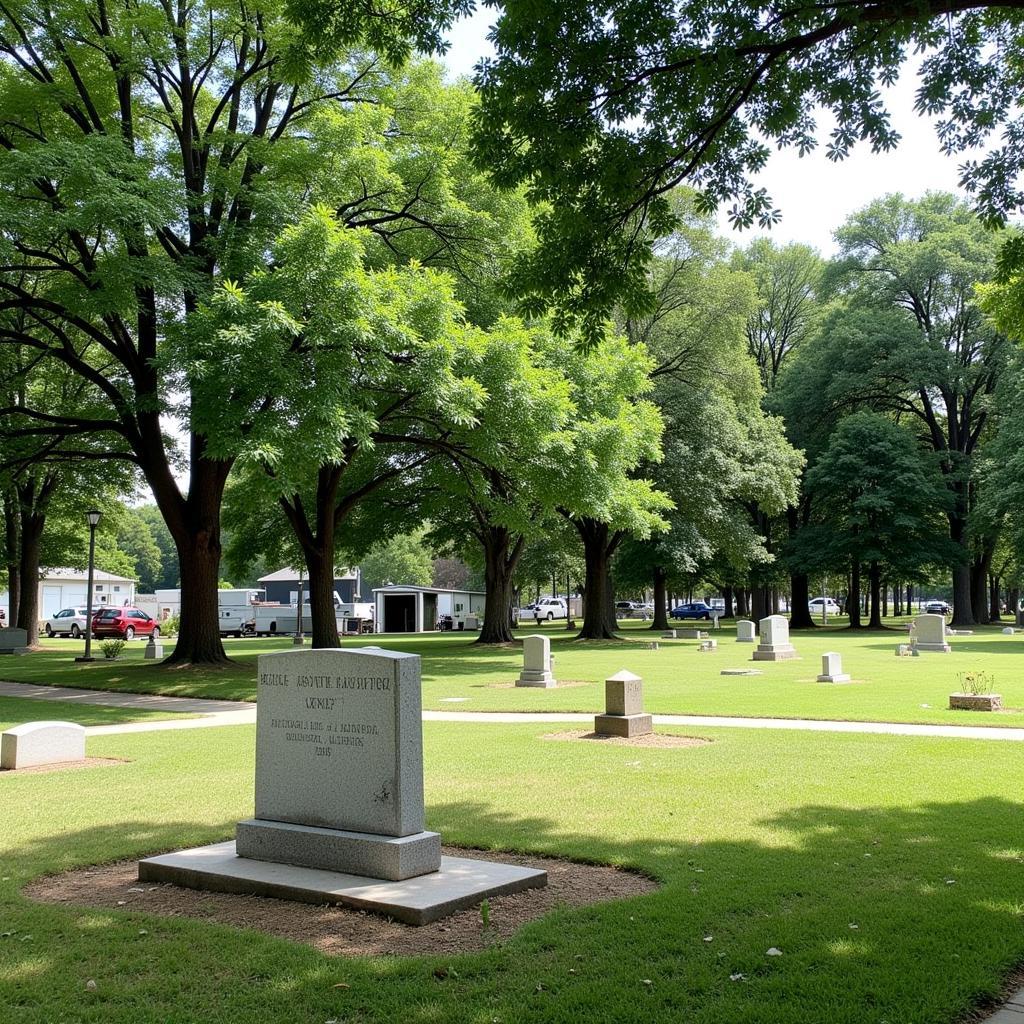The Austin State Hospital Cemetery, a place of quiet reflection and historical significance, holds a unique place in Austin’s history. It serves as a poignant reminder of the challenges faced by those struggling with mental illness and the evolution of mental healthcare in Texas. This article will delve into the cemetery’s past, explore its present state, and discuss its importance in understanding the journey of mental health treatment.
A Glimpse into the Past: The Austin State Hospital Cemetery’s Origins
The Austin State Hospital, originally known as the Texas State Lunatic Asylum, opened its doors in 1861. Like many institutions of its time, the hospital faced numerous challenges, including limited resources and understanding of mental illness. The cemetery, established shortly after the hospital’s opening, became the final resting place for many patients who passed away while under its care. These individuals, often forgotten by society, found their final peace within the cemetery’s grounds.
These early burials often lacked proper documentation, making it difficult to identify many of the individuals interred. This lack of record-keeping reflects the societal stigma surrounding mental illness and the often-marginalized status of those receiving treatment. Over time, efforts have been made to document and preserve the stories of those buried within the cemetery, recognizing their inherent value and humanity.
The Cemetery Today: A Place of Remembrance and Respect
Today, the Austin State Hospital Cemetery stands as a testament to the past and a symbol of progress in mental healthcare. The cemetery, now meticulously maintained, offers a peaceful environment for reflection and remembrance. While the exact number of burials remains uncertain due to incomplete early records, it is estimated that thousands of individuals rest within its grounds.
 Austin State Hospital Cemetery Present Day
Austin State Hospital Cemetery Present Day
The simple headstones, many marked only with numbers, serve as a stark reminder of the individuals who lived and died within the hospital’s walls. Their stories, though often lost to time, contribute to the rich tapestry of the hospital’s history and the broader narrative of mental health in Texas.
The Importance of Remembering: Austin State Hospital Cemetery and Mental Health Advocacy
The Austin State Hospital Cemetery provides a valuable opportunity for reflection on the evolution of mental healthcare. It serves as a reminder of the strides made in understanding and treating mental illness while also highlighting the ongoing need for continued advocacy and support. Visiting the cemetery offers a poignant experience, connecting visitors with the human stories behind the history of mental health treatment.
What is the significance of the Austin State Hospital Cemetery?
The Austin State Hospital Cemetery is significant because it represents the history of mental healthcare in Texas and serves as a reminder of the individuals who received care at the hospital.
Why is it important to preserve the cemetery?
Preserving the cemetery is important to honor the individuals buried there and to provide a space for reflection and remembrance.
“The cemetery is not just a place of burial,” states Dr. Eleanor Vance, a fictional historian specializing in Texas medical history, “it’s a living archive of the struggles and triumphs of those who lived with mental illness. It’s a place that compels us to remember and to advocate for better mental health care for all.”
Connecting the Past with the Present: Lessons Learned and Future Directions
The Austin State Hospital Cemetery serves as a powerful symbol of the progress made in mental healthcare. While the past may hold painful reminders of societal stigma and inadequate treatment, the present offers hope for a future where mental illness is understood and treated with compassion and respect. “We must never forget the lessons learned from the past,” adds Dr. Vance. “These lessons inform our present efforts and inspire us to create a future where everyone has access to the mental health care they need.”
The Austin State Hospital Cemetery encourages us to reflect on the past, appreciate the present, and work towards a future where mental health is prioritized and those struggling with mental illness receive the support and care they deserve.
In conclusion, the Austin State Hospital Cemetery is more than just a burial ground; it is a historical landmark, a place of remembrance, and a powerful symbol of the ongoing journey towards better mental healthcare. It serves as a poignant reminder of the challenges and triumphs in the history of mental illness treatment, urging us to continue advocating for improved care and understanding.
FAQ
- Where is the Austin State Hospital Cemetery located? The cemetery is located on the grounds of the Austin State Hospital in Austin, Texas.
- Can the public visit the cemetery? Yes, the cemetery is generally open to the public.
- Are there guided tours of the cemetery? Information on tours can be obtained by contacting the Austin State Hospital.
- How many people are buried in the cemetery? The exact number is unknown due to incomplete early records, but it is estimated to be in the thousands.
- What is the significance of the numbered headstones? Many of the numbered headstones represent individuals whose identities were lost or not properly recorded.
- How can I learn more about the history of the Austin State Hospital? The hospital archives and historical societies are valuable resources for learning more.
- How can I support mental health initiatives in my community? There are numerous organizations dedicated to mental health advocacy and support that welcome volunteers and donations.
For any further assistance, please contact us: Phone: 02437655121, Email: [email protected] Or visit us at: 298 Cau Dien Street, Minh Khai, Bac Tu Liem, Hanoi, Vietnam. We have a 24/7 customer service team.